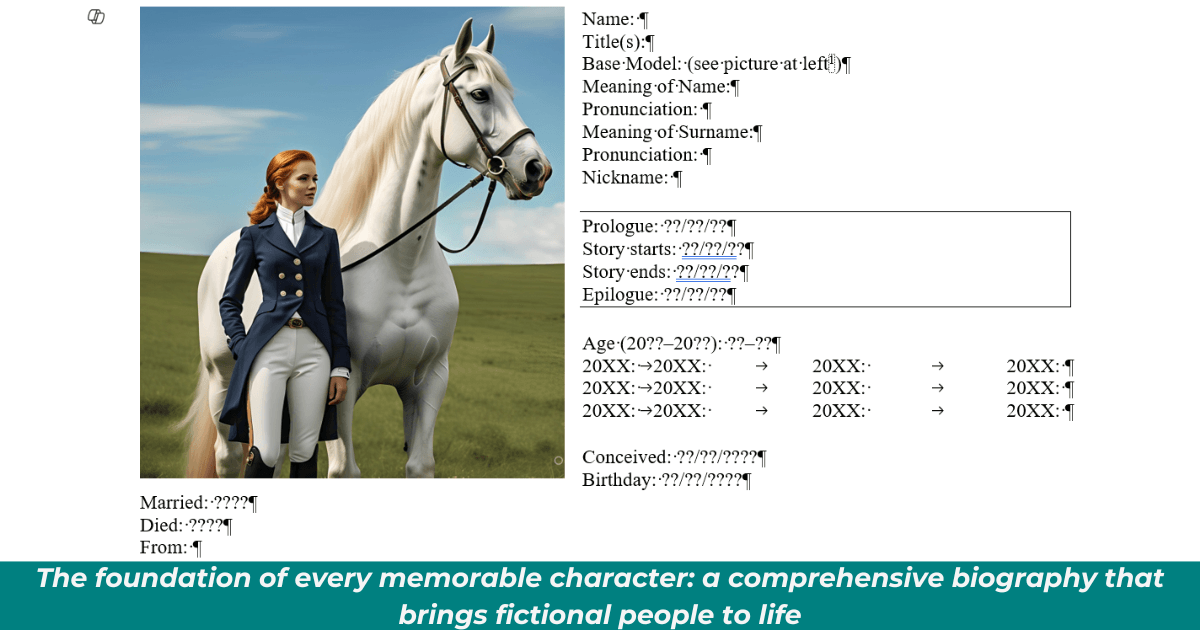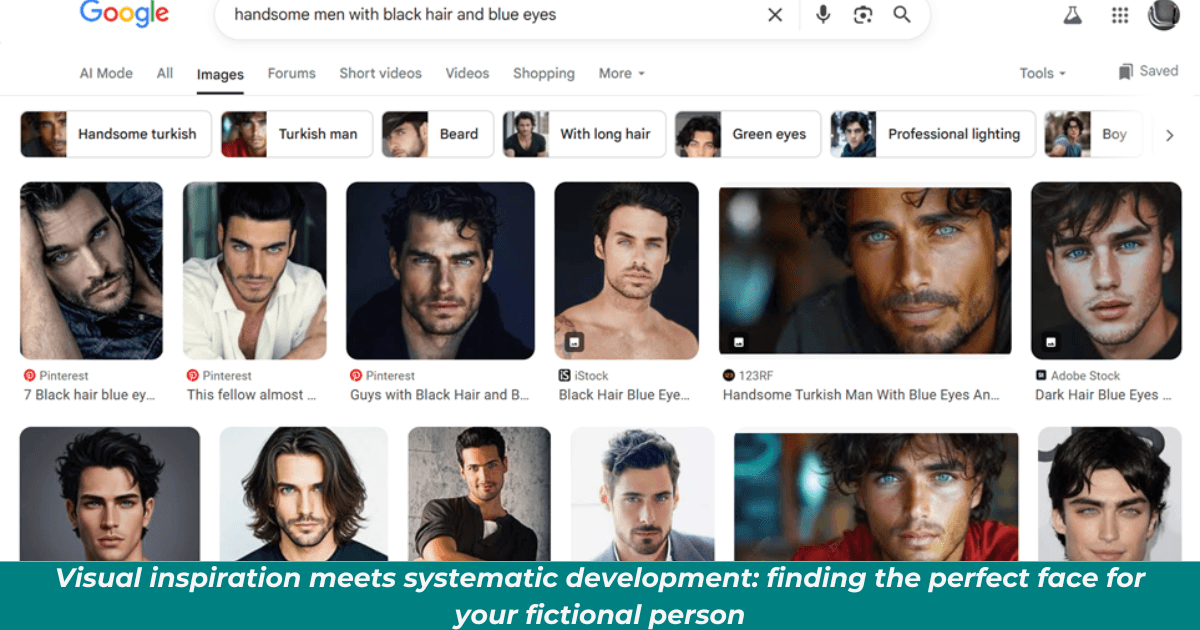
Book Review: Building Believable Characters – The Book That Started It All
How One 1996 Sourcebook Revolutionized My Character-Building Process

4-part “Believability” series
Series Finale

July 23, 2025 | 12-minute read
Over the past three weeks, I’ve shared my techniques for writing believable characters, authentic dialogue, and vivid settings.
But today, I want to tell you about the book that started it all — the resource that transformed me from someone who wrote characters named “Bob” who mysteriously became “John” halfway through the story into someone who gets consistent feedback about creating believable, engaging people.
The book is The Writer’s Digest Sourcebook for Building Believable Characters by Marc McCutcheon, and even though my copy is from 1996, it remains one of the most valuable writing resources on my shelf.
Let me tell you why this book changed everything for me — and why it might do the same for you.
When I Discovered This Game-Changer

After my embarrassing Bob/John character name fiasco in high school, I knew I needed help with character development. When I decided to pursue writing professionally, I went searching for resources that could teach me how to create consistent, believable characters.
That’s when I discovered McCutcheon’s sourcebook, and it immediately became clear this wasn’t just another writing advice book. This was a practical toolkit designed to solve exactly the problems I was facing.
The book is 282 pages divided into three distinct sections, each serving a specific purpose in the character-building process.
What Makes This Book Different
As McCutcheon explains in the introduction, this sourcebook is “a bona fide thesaurus, designed to be used guilt-free…. Like a traditional thesaurus, this sourcebook is nothing more than a memory enhancer; a lexicon to jog your imagination and show you words you might not think of (or at least not think of quickly) on your own.”
This approach immediately appealed to me because it wasn’t telling me what to think about my characters — it was giving me the tools to think more thoroughly and specifically about them myself.
Part One: Learning from the Masters
The book opens with “Creating Great Characters,” featuring interviews with six popular novelists about their character development techniques.
To be perfectly candid, I got nothing out of this interview portion. The authors didn’t tell me anything I didn’t already know or had observed through reading other writers’ work.
But that’s okay — the real treasure lay in the remaining two sections.
Why the Interviews Didn’t Work for Me
The problem with most writing advice interviews is that they tend to focus on inspiration and general principles rather than concrete, actionable techniques.
While it’s interesting to hear how successful authors approach character development, I needed specific tools I could implement immediately.
Fortunately, McCutcheon delivered exactly that in the book’s remaining sections.
Part Two: The Character Questionnaire That Changed Everything

Part Two contains what McCutcheon calls the “Character Questionnaire” — a multi-page biography template to complete for your characters.
This was my first introduction to the concept of comprehensive character biographies, and it revolutionized my approach to character development.
And here’s what I discovered: the template was just the beginning.
How the Template Grows with You
What you’ll find is that the biography and thesaurus sections are springboards.
When you start using them, you’ll begin seeing things that were left off that you always seem to need for the characters you create. Excellent! You can add them to your biography document.
In no time, you’ll start to see that your Character Biography Template has grown from the few pages provided in the book.
That’s the fun of this resource — it gives you a starting point, but the more you write, the bigger your biography template will become.
Consider it your marker for how far you’ve come as a writer.
Part Three: The Character Thesaurus Treasure Trove
Part Three, “Character Thesaurus,” starts on page 50 and continues to the end at page 282.
This entire section is devoted to giving you a thesaurus of words and ideas to help you build your characters.
And when I say everything, I mean everything.
Names from Around the World
You’ll find first and last name suggestions for each gender organized by country.
So if you’re stuck for an authentic Jewish name for your handsome hero, just look it up. There are several surnames just waiting to help you form your lead.
Or if your villain is to be Russian, don’t fear — there are plenty of first and last Russian names to help get your creative juices flowing.
Physical Descriptions Made Easy
You’ll also find face types and body parts listed. Eye color. Nose shape. Type of facial hair or face shape.
Anything you could need to help you start describing the leading lady you see in your mind.
This was incredibly helpful for maintaining consistency — no more accidentally giving my blue-eyed hero green eyes three chapters later!
Personality, Behavior, and Beyond
Once your character is formed physically, you can bring them to life through their personality, intellect, health, and anything else that you might find in real life.
You’ll get a breakdown of personality types, manias, vices, disorders and diseases, common gestures, laughs, ways of walking.
Fashion breakdowns so you won’t have to repeat that “she loved vintage and retro attire” but can, instead, identify the “vintage/retro” as a bubble skirt or a diamanté dress.
Authentic Dialogue Through Regional Speech

The book also provides prompts on dialects and foreign speech patterns — something that directly influenced my approach to writing believable dialogue.
So when your British hero says he’s moving into his own place, you know to call it a “flat” and not an “apartment.”
Or if your Southern antagonist threatens your hero, you can slip in a dialect-appropriate warning: “So don’t bothuh cawlin’ foh the PO-lees. Cuz they caint hep you now.”
Building Your Own Reference Library
As McCutcheon notes, “And the list goes on and on. Everything you can imagine that goes into the construction of a living, breathing three-dimensional being that readers can relate to, love, hate, love to hate, or hate to love.”
Just like the biography template, you’ll find that the thesaurus begins to grow too.
You’ll start adding your own selections — maybe some new clothing silhouettes or hairstyles, perhaps expanding the British slang section with other words you’ve come across.
The Visual Component: My Google Images Technique
While McCutcheon’s book gave me the systematic approach to character development, I added my own technique that I mentioned in my first post: using Google Images to find visual references for my characters.
When you’re struck with inspiration for a new story, hop online.
If you know that you want your hero to be gorgeous with black hair, blue eyes, and an attractive smile, go to Google and type that in the search bar: “handsome men with black hair, blue eyes, attractive smile,” and click on Images.
Then start going through the resulting pictures. My guess is you’re going to find the one image that screams out “Winner!”
I know I always do. I’ll go through the long results and stop when I say, “Oh! There’s Jake!”
Maintaining Visual Consistency
All you have to do is copy that image and paste it on the new Character Biography you’ve created for this hero.
And now if you decide halfway through the book that you want to make this a series, you’ll always have the picture of your hero to guide you.
And you won’t accidentally say that your hero Ted has red hair instead of brown — a mistake that can completely jar readers out of your story.
The Foundation of Everything I Do
I’m constantly told that I build such believable characters, and I credit this book as one of the tools I used to help me establish myself as a writer in shaping my characters.
The final paragraph in McCutcheon’s introduction contains advice that has guided my character development ever since:
“Use this sourcebook before you begin to write your story. Start with a rough character idea and build point by point, physically, intellectually, psychologically. Write a character profile, a dossier, a history, or a secret FBI file. Whatever works. Whatever helps you to visualize the character clearly. But fill it with detail.
“And remember this advice: If the character is foggy to you, it will be foggy to the reader. Make those details real.”
Creating People, Not Characters
This connects directly to something I mentioned in my first post about Ernest Hemingway’s advice:
“When writing a novel, a writer should create living people; people not characters. A character is a caricature.”
That’s exactly what McCutcheon’s systematic approach helps you achieve.
When you can create a character that you feel you know as if they were real, then I guarantee that character will become real to your readers too.
Strive to create people — not characters.
Why This Old Book Still Works
Yes, my version of this book is from 1996, and I think there’s a more current version available.
But even if all you can find is this original edition, you won’t be wasting money getting it. It really does come in handy, especially when you’re just starting out.
The principles McCutcheon teaches are timeless because human nature is timeless.
People still have the same basic personality types, physical characteristics, and emotional motivations they had in 1996 — and that they had centuries before that.
A Foundational Investment
Think of this book as foundational infrastructure for your writing career.
Just as you need a dictionary and a thesaurus, McCutcheon suggests keeping his sourcebook “between your dictionary and your Roget’s” — and I completely agree.
It’s the kind of reference you’ll return to again and again, each time discovering new details that bring your characters to life.
Bringing It All Together: The Complete Believability System
Over this four-part series, I’ve shared my complete system for creating believable fiction:
Comprehensive character biographies using McCutcheon’s template as a starting point
People-watching techniques to observe authentic human behavior
Visual references through Google Images for consistency
Authentic dialogue based on real speech patterns and regional variations
Vivid settings that ground your characters in believable worlds
Each element supports the others, creating a comprehensive approach to believability that serves your readers well.
The Ultimate Goal
Remember, creating believable fiction isn’t about perfection — it’s about authenticity. When readers feel they could run into your characters at the grocery store, when your dialogue sounds like real conversation, when your settings feel like places they could visit, you’ve succeeded.
As McCutcheon reminds us, if your character is foggy to you, they’ll be foggy to your readers too. But when you take the time to truly know your fictional people, readers will believe in them completely.
Your Next Steps
If you’re serious about improving your character development, I highly recommend finding a copy of McCutcheon’s Sourcebook for Building Believable Characters.
Even if you can only locate the 1996 edition, it will serve you well.
Remember that creating people is what God does every day. And as a writer, it’s your job now too.
Get the book. Create your character biography template. Start people-watching with new purpose. Find visual references for your fictional people. And go have fun playing creator — building characters so real that readers will never forget them.
Free Resource for You*
Want to get started immediately? I’ve created my own Character Biography Template based on McCutcheon’s framework, expanded with years of my own character development experience.
You can download it for free from my Writers Resources page and begin building comprehensive profiles for your fictional people right away.
This template includes all the categories McCutcheon suggests plus additional sections I’ve found essential over the years. It’s the same template I use for every character in my novels — and it’s yours free.
Next time: I’ll be diving into another fascinating topic — an ode to the little books that made literature more accessible! I hope you’ll come back for a post that’s sure to be both nostalgic and educational.
Join me next week as we celebrate our love of books and the reading culture by honoring Paperback Book Day.
Have you read McCutcheon’s “Building Believable Characters” or do you have other character development resources you swear by?
What’s your biggest challenge when creating fictional people?
Share your character development struggles and successes in the comments — I love hearing about the techniques that work for other writers!
Related Topics: character development, believable characters, character biography, Marc McCutcheon, Writer’s Digest, character consistency, writing craft books, character thesaurus, fictional people, writing reference books
Post image and internal images 1 (character bio form) & 3 (Google Image results) courtesy of yours truly. 😊 Internal image 2 (writer using reference materials) courtesy Meta AI. SEO image courtesy Chat GPT.

Alicia Strickland
Hi! I write across multiple genres under various pen names. But for nonfiction, I write as myself. As a designer with a love of Old Hollywood and all things creative, I bring diverse perspectives to my storytelling... and to my blog. In the unlikely event that I’m not writing, I enjoy crafting, gardening, or spending time with my flame-point Siamese, Hunter.
Want to stay updated? Sign up for my newsletter(below 👇) to receive exclusive content and be the first to hear about new releases!
YOU MIGHT LIKE

Jan 08, 2025
Jan 08, 2025
POPULAR POSTS
By Alicia Strickland on February 14, 2025
By Alicia Strickland
Jan. 05, 2025
REVIEWS

Jan 15, 2025
Dec 29, 2024
Jan 20, 2025
Feb 14, 2025

Crafting passionate tales for adult hearts and creating magical worlds for young minds!
Stay in touch!
Click “subscribe” to get weekly newsletter updates on all BBA news and books.
©️ 2025 booksbyalicia.com
